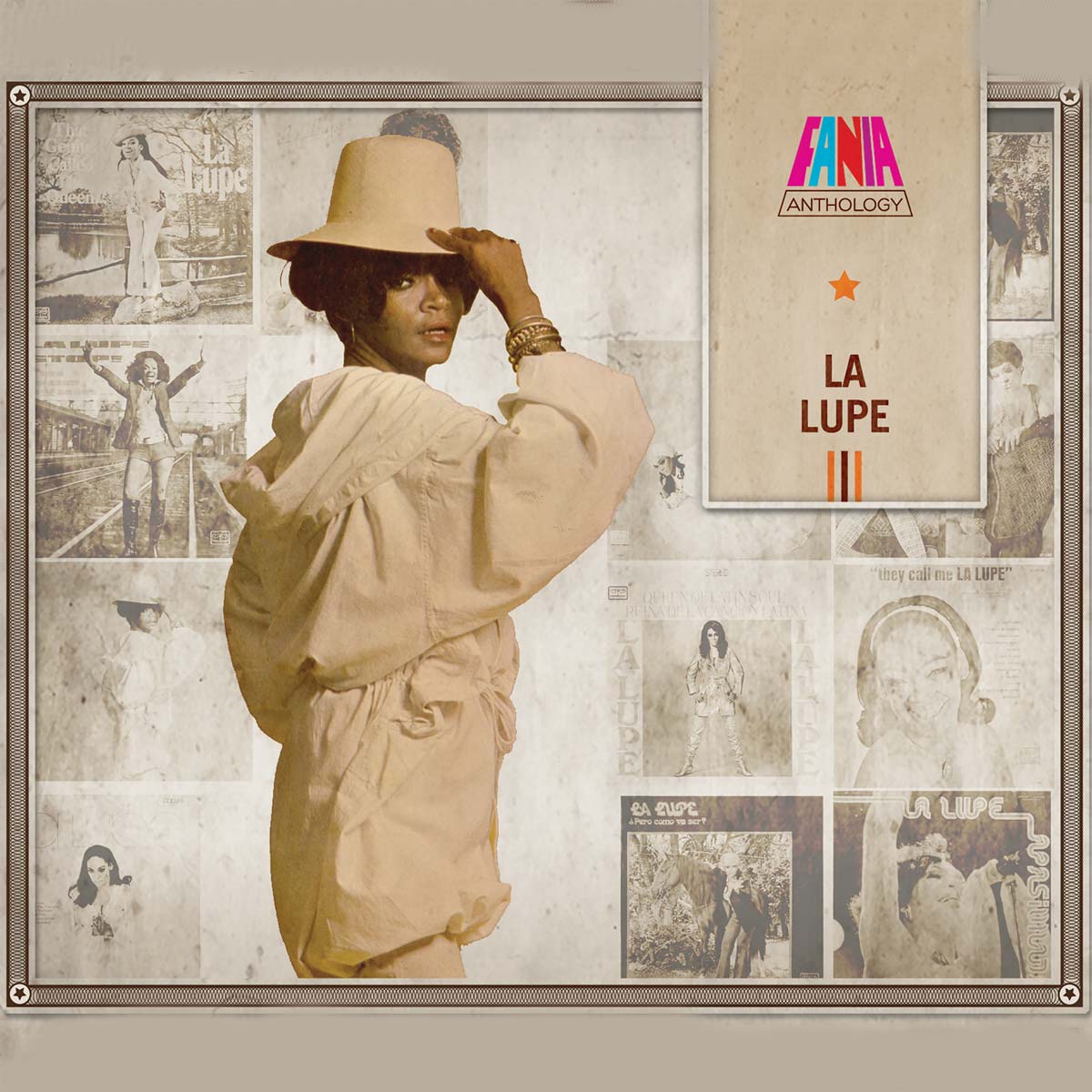
The most controversial singer in the history of Latin music was undoubtedly Lupe Victoria Yolí Raymond, better known by her stage name: La Lupe. The Santiago de Compostela native, possessed of a vibrant and powerful voice –not to mention a sensuality that exceeded her diminutive form– won the affection of the Spanish-speaking population, who voted her “The Queen of Latin Music” in 1967.
On this album, La Lupe performs one of her greatest hits, ‘Puro Teatro,’ written by the great Puerto Rican composer emblematic of La Fania: Catalino Curet Alonso, known to all by his nickname, “Tite.” ‘Puro Teatro’ is one of the most successful pieces in the history of Afro-Cuban and Afro-Puerto Rican music.
In addition, the well loved singer performs three of the 18 songs she wrote during her career: “The Queen,” the guajira number “Me Siento Guajira,” and the Bembe piece “Guaguancó Bembé.”
During those times, La Lupe was deep in the throes of adopting Santeria, the Yoruba religion that constituted an integral part of her life and the driving force behind her actions for the majority of her life in the United States. The album cover shows her dressed in white, with her head covered, in keeping with the early practices of this religious tradition.
La Lupe closes the album with the Bembe number “Guanguancó Bembé,” a song in which she pays homage to African deities and a custom she adopted during her days with Tito Puente and carried with her throughout her albums for many years.
In addition to their musical function, these Bembe numbers played a spiritual role. Although they were never popular on the radio or with the singer’s average fan, these songs were a testament to La Lupe’s spirituality, and a way of giving thanks to the saints. Clearly, she sought the blessing of these spiritual entities, and waited for news of the album’s success with her fans.
A series of songs –including the popular “Sueño” by Gabriel Ruíz, “Último Adiós” by Rubén Estéfano, and “A la orilla del Mar” by Esperón y Cortázar– take the album to the next level, and showcase the interpretive talent of the remarkable diva. Her mastery of a wide variety of rhythms within Afro-Cuban and Afro-Puerto Rican musical traditions is proof of the red-hot Cuban rhythm that separates her from the rest: a mastery that earned her the affection of millions of fans around the world.
La Lupe has remained an enigma in the minds of the fans who supported her during her momentous and tumultuous career. During the research for my book, entitled, “Demitificación de un diva; La Verdad sobre La Lupe,” I discovered that many of the stories attached to the legend of the extraordinary diva were based on myth generated by the Puerto Rican folklore surrounding her. Many of the innuendos floating throughout her story were the result of a blurred view of the extraordinary talent she exhibited. I found that beyond the virtual insanity that defined her work and her life lay a valiant, dedicated, and spiritual woman who cared only about her religion, her career, and the acceptance of her fans.
This album provides a clear example of the interpretive ability of the well loved artist, who, despite having abandoned the artistic world at the age of 50, left immortalized in her recordings an indisputable message of love and romance that define a unique talent.
The collection also reveals that La Lupe had all the talent in the world, and that she was an artist who could hold her own without the musical support of the maestro, Tito Puente.
Those who followed Lupe Yolí’s career certainly enjoyed her exceptional style and her excellent, unique way of imprinting her Cuban filin onto her bolero numbers. Anybody who did not live through that time has in this album the opportunity to experience the emotion of one of the greatest singers who mounted the tarima in the face of Latin music’s voracious appetite.
This is La Lupe at her finest; this is La Lupe in action. This is the only true queen of Latin music, singing to fans who span generations. It is an extraordinary album that will live now and forever in generations past, present, and future.
Arranged and Conducted by Joe Cain: Puro Teatro, Sueno, Ultimo Adios, A La Orilla Del Mar and El Dia Que Yo Naci.
Arranged and Conducted by Hector Rivera: La Reina, Me Siento Guajira, Café Con Leche, That’s The Way It’s Gonna Be, and Guaguanco Bembe
Engineer: Fred Weinberg
Recorded at: A & R Studios
Cover Design by: Ely Besalel
Photo by: Warren Flagler
Produced by: Art Kapper
Written by Juan Moreno Velázquez








